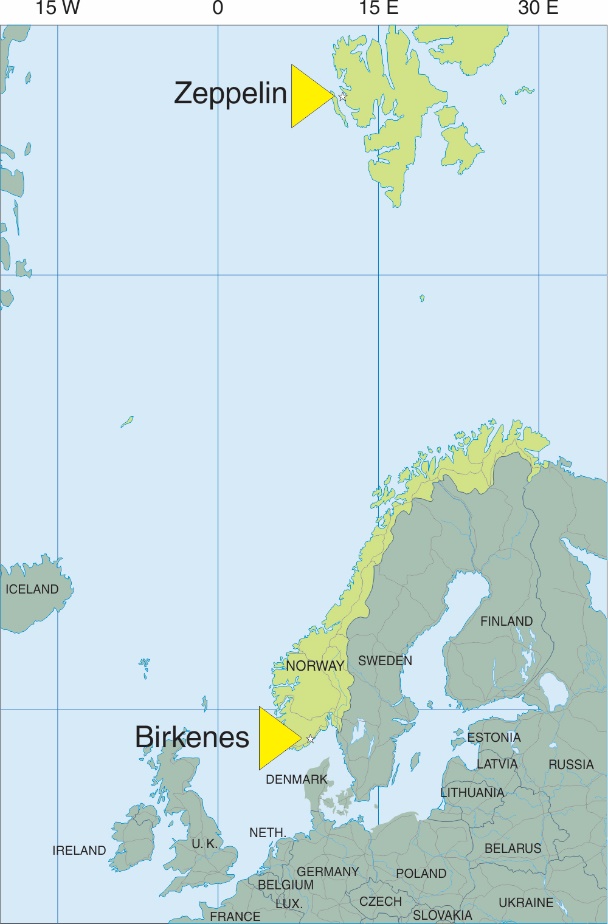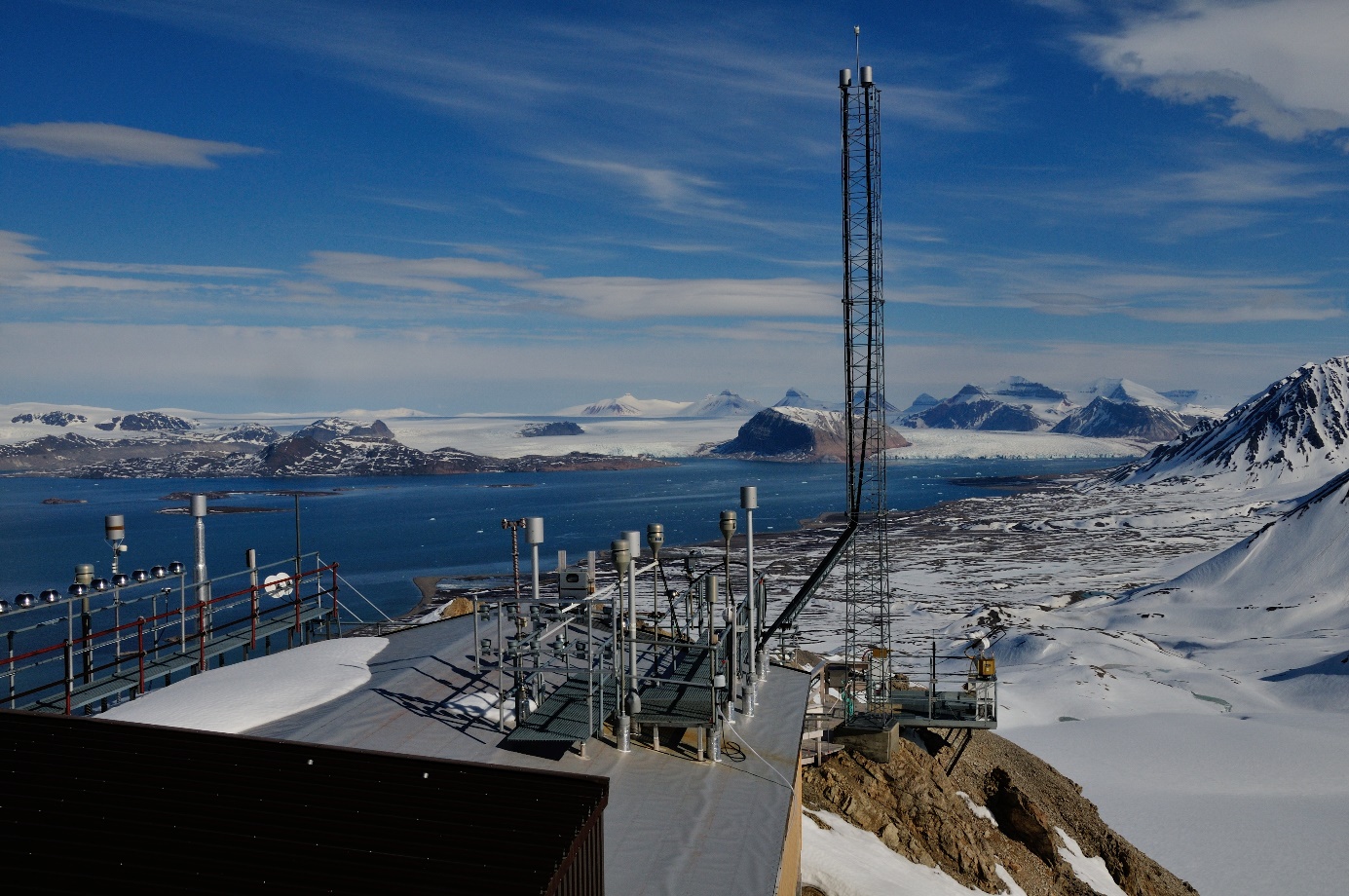
Carbon dioxide (CO2) and methane (CH4) are the most important anthropogenic greenhouse gases influencing the Earth’s climate. They occur naturally in the atmosphere, and human activities can increase their concentrations. CH4 and CO2 have different life times and they differently affect climate. In Arctic regions there are particularly large potential sources of CH4 vulnerable to climate change.
Human activities will not only change anthropogenic emissions, but also influence the natural sources, indirectly. We thus need to closely follow the concentrations of these greenhouse gases, to understand the development of trends not only due to direct change in emissions, but also interactions with ocean, ice and terrestrial system. Measurements of CO2 and CH4 concentrations have been done over a long time period at many stations globally. In Norway, measurements started in 2009 at Birkenes and in 2011 at Zeppelin, located in southern Norway and Svalbard (see Fig. 1).
To easily compare and understand observations at different stations, measurements need to be done in a standardized way. In ICOS, a pan-European research infrastructure for greenhouse gases was created and the Birkenes and Zeppelin stations will be upgraded to fully comply with the ICOS standards, as explained at the respective station websites.
The atmospheric observations will include greenhouse gases from natural and anthropogenic sources. In the integration these data, together with ocean and ecosystem components, will be used to identify sources and estimate carbon fluxes. The data will be available through the Carbon Portal.
International harmonisation, contribution and quality assurance
Zeppelin and Birkenes observatories are both central in international networks and framework, contributing to these. This ensure high quality data with harmonised methods and measurements across Europe and also with a global link through GAW (Global Atmosphere Watch Programme), to have comparable data and results. This is essential to reduce the uncertainty on trends and in the observed levels of the wide range of climate forcers. International collaboration and harmonisation of these types of observations are crucial for improved processes understanding and satisfactory quality to assess trends.
Presently, the two central atmospheric research infrastructures are ICOS focusing on the understanding of carbon cycle, and ACTRIS (Aerosols, Clouds, and Trace gases Research InfraStructure) focusing on short-lived aerosol climate forcers and related reactive gases, and clouds. Both the Norwegian atmospheric sites are included in ICOS and ACTRIS, and also contributing to EMEP (European Monitoring and Evaluation Programme) under the CLTRAP (Convention on Long-range Transboundary Air Pollution). Data from the sites are also reported to CAMP (Comprehensive Atmospheric Monitoring Programme) under OSPAR (the Convention for the Protection of the marine Environment of the North-East Atlantic); AMAP (Arctic Monitoring and Assessment Programme); WMO/GAW (The World Meteorological Organization, Global Atmosphere Watch programme) and AGAGE (Advanced Global Atmospheric Gases Experiment).
Film about the Zeppelin Observatory
474 meters above sea level, outside Ny-Ålesund in Svalbard, the Arctic Observatory Zeppelin is situated. Here, at 79° north, scientists from Norway and the rest of the world capture the clearest signs of climate change. See more about the Zeppelin Observatory's role in the international monitoring of climate and environment in this film, made by ICOS, ICOS Norway and NILU (Norwegian Institute for Air Research): https://www.youtube.com/watch?v=AGPaA7231oI
Contact person: Stephen Platt (sp@nilu.no)

Figure 2: Zeppelin observatory in the Arctic, the inlet for greenhouse gas measurements is at the top of the mast.